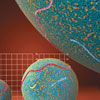Tag Archives: HDL cholesterol

August 2012 Br J Cardiol 2012;19:104–06 doi:10.5837/bjc.2012.022
The future of CETP inhibition – still to be REVEALed
Jonathan Morrell
| Full textMarch 2012 Br J Cardiol 2012;19(Suppl 1):s1-s16
Lipids and CVD: improving practice and clinical outcome
| Full text
March 2012 Br J Cardiol 2012;19(Suppl 1):s1-s16 doi:10.5837/bjc.2012.s01
Lipids and cardiovascular disease: re-thinking targets
Kausik K Ray
| Full text
March 2012 Br J Cardiol 2012;19(Suppl 1):s1-s16 doi:10.5837/bjc.2012.s05
Addressing residual cardiovascular risk: what does the future hold?*
John Reckless
| Full textJuly 2006 Br J Cardiol 2006;13:273-7
Safety and tolerability of prolonged-release nicotinic acid combined with a statin in NAUTILUS
Anja Vogt, Ursula Kassner, Ulrike Hostalek, Elisabeth Steinhagen-Thiessen, on behalf of the NAUTILUS Study Group
| Full textJuly 2006 Br J Cardiol 2006;13:278-82
Safety and tolerability of prolonged-release nicotinic acid in patients aged > 65 years enrolled in NAUTILUS
Anja Vogt, Ursula Kassner, Ulrike Hostalek, Elisabeth Steinhagen-Thiessen, on behalf of the NAUTILUS Study Group
| Full text

